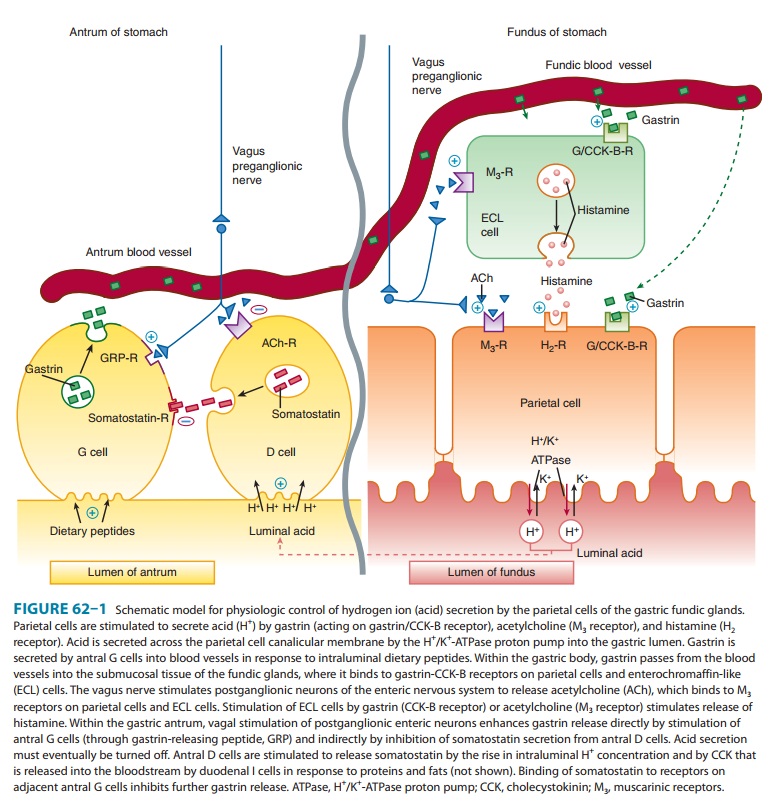Chapter: Basic & Clinical Pharmacology : Drugs Used in the Treatment of Gastrointestinal Diseases
Physiology of Acid Secretion - Agents that Reduce Intragastric Acidity
AGENTS THAT REDUCE INTRAGASTRIC
ACIDITY
PHYSIOLOGY OF ACID SECRETION
The parietal cell
contains receptors for gastrin (CCK-B), histamine (H2), and acetylcholine
(muscarinic, M3) (Figure 62–1). When
acetylcholine (from vagal postganglionic nerves) or gastrin (released from
antral G cells into the blood) bind to the parietal cell recep-tors, they cause
an increase in cytosolic calcium, which in turn stimulates protein kinases that
stimulate acid secretion from a H+/ K+-ATPase (the proton
pump) on the canalicular surface.

In close proximity to
the parietal cells are gut endocrine cells called enterochromaffin-like (ECL) cells. ECL cells also have recep-tors
for gastrin and acetylcholine, which stimulate histamine release. Histamine
binds to the H 2 receptor on the
parietal cell, resulting in activation of adenylyl cyclase, which increases
intra-cellular cyclic adenosine monophosphate (cAMP) and activates protein
kinases that stimulate acid secretion by the H+/K+-ATPase. In humans, it
is believed that the major effect of gastrin upon acid secretion is mediated
indirectly through the release of histamine from ECL cells rather than through
direct parietal cell stimulation. In contrast, acetylcholine provides potent direct
parietal cell stimulation.
Related Topics